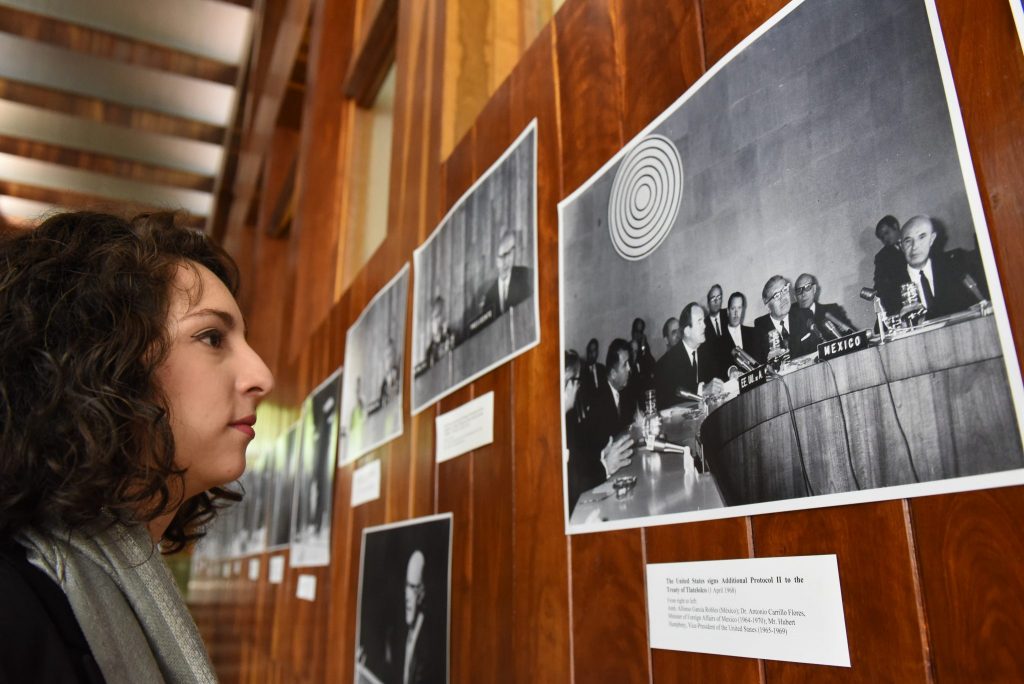Disarmament over deterrence: Nuclear lessons from Latin America
By Christopher Dunlap | August 1, 2018

In late May, the National Security Archive released newly declassified US documents from more than 50 years ago showing Mexico’s support for nuclear disarmament far beyond the boundaries of Latin America and the Caribbean. The documents reveal that Mexico’s ambassador to United Nations negotiations in Geneva sought to contribute unambiguous language on disarmament, peaceful nuclear use, and nuclear-weapon-free zones to the text of the Nuclear Non-Proliferation Treaty (NPT), finalized in 1968. The NPT bears many of the same philosophical and legal imprints as the Treaty of Tlatelolco finalized the previous year, which banned nuclear weapons development, storage, or deployment south of the Rio Grande and in the Caribbean basin.
Today the world is closer to nuclear war than at any time since the 1960s. The deterioration of United States relations with at least three nuclear hotspots across the world – North Korea, Russia, and Iran – explains a great deal of the grave assessment that “major nuclear actors are on the cusp of a new arms race.”
The vast majority of the world’s nations, however, have renounced nuclear weapons. In 2017, 122 of the United Nations’ 193 member countries voted to approve the Treaty on the Prohibition of Nuclear Weapons, which calls for complete global nuclear disarmament on humanitarian grounds. These countries believe that nuclear weapons, no matter which nations possess them, pose an unacceptable threat to human life and to an increasingly fragile planet. For them, security is disarmament. For political and military leaders in nuclear-armed countries, on the other hand, security is deterrence, in which the threat of destruction by nuclear weapons keeps the world’s strongest militaries from initiating war.
If these mutually exclusive languages of disarmament and deterrence can be translated into some common vocabulary, and if the politics of fear dissipate, a complete global ban on nuclear weapons has a chance to succeed. A half-century ago, a similarly ambitious plan faced long odds and a bumpy road from idea to reality.
Success story. The Treaty of Tlatelolco, finalized in February 1967, created a regional microcosm of a nuclear-weapon-free world. In addition to banning nuclear weapons, Latin American and Caribbean diplomats and heads of state obtained guarantees from the world’s nuclear-armed nations (and its lingering overseas empires, among them, Britain, France, and the Netherlands) to abide by the same rules. Remarkably, almost all of these guarantees in the treaty’s additional protocols – including those made by the United States and the Soviet Union – were ratified within 15 years, lightning speed in the world of nuclear diplomacy, and long before the treaty itself entered into force with Cuba’s accession in 2002.
It is no wonder, then, that Latin American and Caribbean nations dominate the list of the 58 early signatories of last year’s Treaty on the Prohibition of Nuclear Weapons. The region’s percentage of signatory nations (33 percent) is roughly double that of its share of total member countries of the United Nations (17 percent). The most likely explanation for such disarmament enthusiasm almost certainly centers on what happened at Tlatelolco. After Soviet Premier Nikita Khrushchev removed nuclear missiles from Cuba in 1962, Mexican diplomat Alfonso García Robles led a long and contentious negotiation process, concluding in 1967 with an agreement that stands today as both a landmark of nuclear nonproliferation and a model for global disarmament.

The Treaty of Tlatelolco served as both a call and a blueprint to create four additional nuclear-weapon-free zones in the South Pacific, Southeast Asia, Central Asia, and Africa. Nearly three-fifths of the world’s countries now belong to these zones.
Different priorities. Disarmament ranked well above nonproliferation as the motive force for creating the Treaty of Tlatelolco, the world’s first nuclear weapons ban in a populated area. Appearing before any other specific legal provision in the treaty’s text, “general and complete disarmament under effective international control” stood as Tlatelolco’s ultimate goal. Secondarily, the treaty aimed to check the spread of nuclear weapons to countries not already possessing them. Lastly, the agreement’s preamble sought to preserve the uninhibited use of nuclear energy for peaceful purposes, defending Latin American and Caribbean nations’ “right to the greatest and most equitable possible access” to the atom’s immense potential for economic and social development.

The NPT’s Article VI, which calls for all parties “to pursue negotiations in good faith on effective measures relating to cessation of the nuclear arms race at an early date and to nuclear disarmament,” traces back to a more specifically worded draft proposal from Mexico, requiring nations with nuclear weapons to prohibit their testing, manufacturing, and storage “with all speed and perseverance,” and to work toward “the liquidation of all their existing stockpiles.” (Last year’s Treaty on the Prohibition of Nuclear Weapons is in fact the fulfillment of the last clause of Article VI of the NPT, an agreement to pursue a “treaty on general and complete disarmament under strict and effective international control.”)
But nuclear weapon states sought a role for continued deterrence in the NPT by inserting a division that the architects of Tlatelolco had rejected, parting the world into nuclear “haves” and “have-nots” with separate and unequal sets of rights and responsibilities. In the view of Argentine diplomat Julio César Carasales, the NPT represented the “disarmament of the disarmed,” conferring almost unlimited privileges on nuclear-armed powers while subjecting the rest of the world to onerous restrictions, even on peaceful technology. And while the NPT vaguely promised general and complete disarmament through Article VI, it did not mandate any timeline or procedure by which nuclear-armed countries would actually dismantle their weapons. From 1975, when the first NPT Review Conference took place among the treaty’s parties, until 2010, when the preparatory committee for the Treaty on the Prohibition of Nuclear Weapons began meeting, non-nuclear weapon states had only one shot every five years to try to hold weapon nations accountable to their promises of disarmament.
A 50-year-old road map. With the adoption of last year’s ban treaty, the 184 UN member countries and two observer states that do not possess nuclear weapons now have an agreement with the potential to gradually discredit nuclear weapons (and their role in deterrence) as illegitimate tools of global security. By following the lead of international treaties prohibiting other classes of weapons of mass destruction – biological, chemical, land mines, and cluster munitions – the proponents of the 2017 agreement are hoping that, someday, the leaders of nuclear-armed states might agree that global security lies in disarmament instead of deterrence.
It certainly won’t be easy. Like the architects of the Tlatelolco agreement that entered into force 35 years after it was finalized, the UN diplomats and civil society organizations that hashed out the Treaty on the Prohibition of Nuclear Weapons crafted an ambitious, audacious document that they may not live to see made into law. At least two prominent American nuclear policy and disarmament experts view the UN treaty as a series of lost opportunities to educate citizens of nuclear-armed nations about the threats posed by those arms of mass destruction. Worse, three historical allies among the world’s small club of nuclear-armed countries—the United States, France, and the United Kingdom—immediately rejected the Treaty on the Prohibition of Nuclear Weapons for failing to “address the security concerns that continue to make nuclear deterrence necessary.”
Indeed, there is no reason to think that nine nuclear-armed nations will be persuaded anytime soon to dismantle the weapons of mass destruction that they rely on for deterrence. But a path to disarmament-based security is viable. Latin American and Caribbean visionaries gave us the road map at Tlatelolco a half-century ago. They were correct on at least two points: A world free of nuclear weapons is not only possible; it is fundamental to our long-term survival.
Together, we make the world safer.
The Bulletin elevates expert voices above the noise. But as an independent nonprofit organization, our operations depend on the support of readers like you. Help us continue to deliver quality journalism that holds leaders accountable. Your support of our work at any level is important. In return, we promise our coverage will be understandable, influential, vigilant, solution-oriented, and fair-minded. Together we can make a difference.
















The two nuclear superpowers that be are too strong for any pacifist treaty to make any difference.